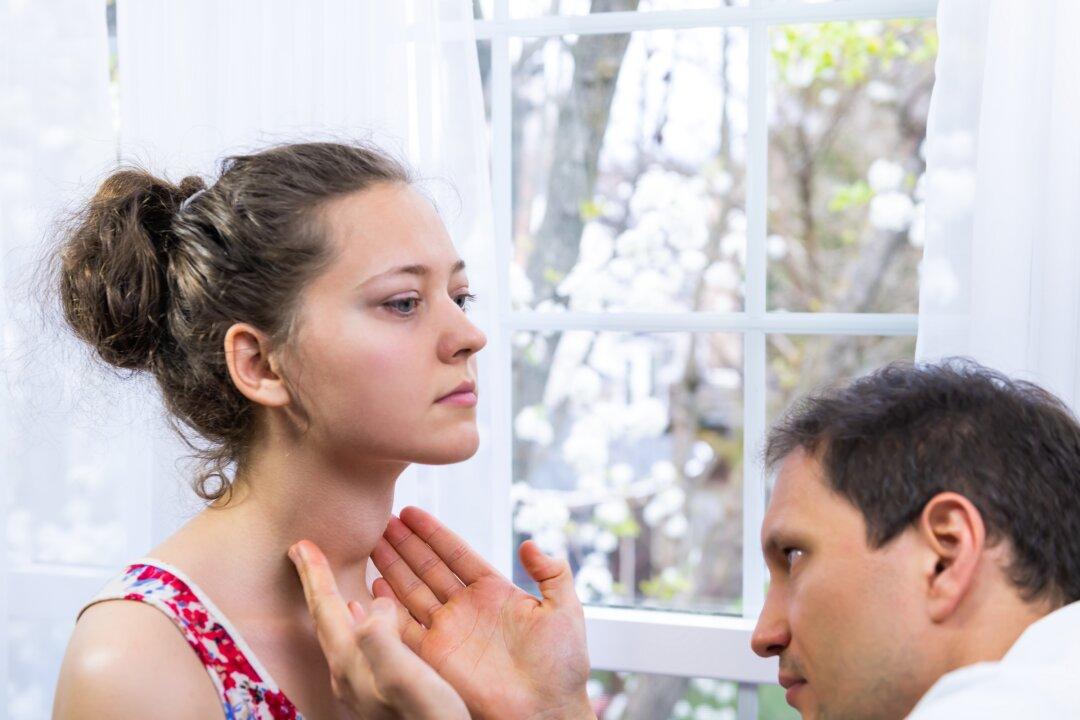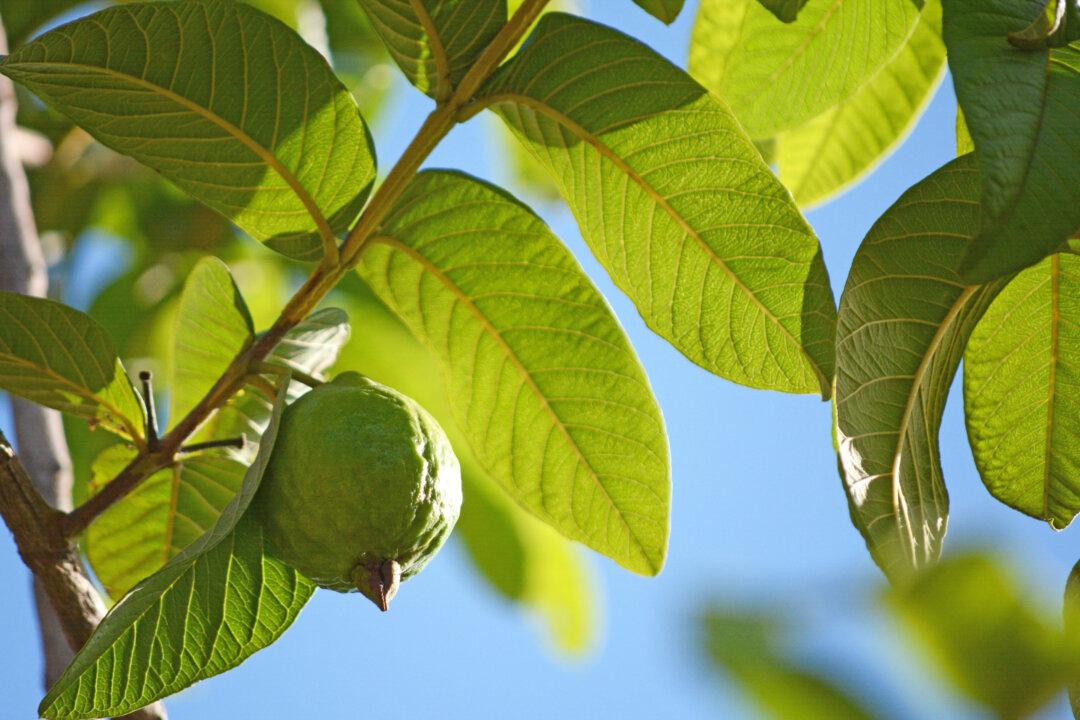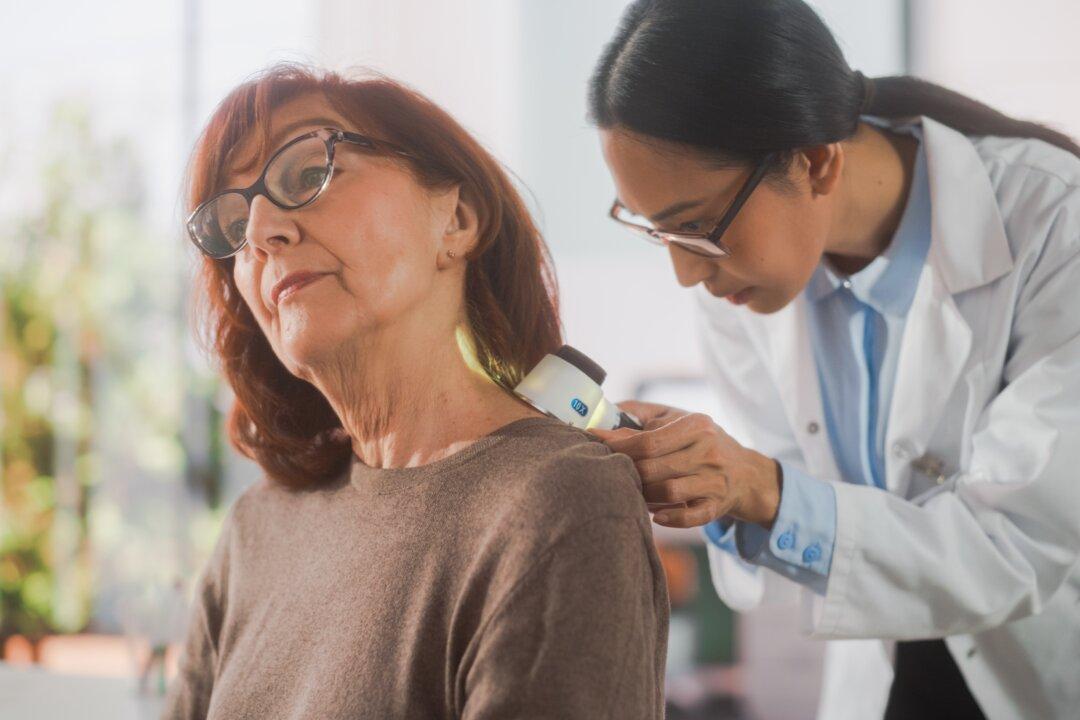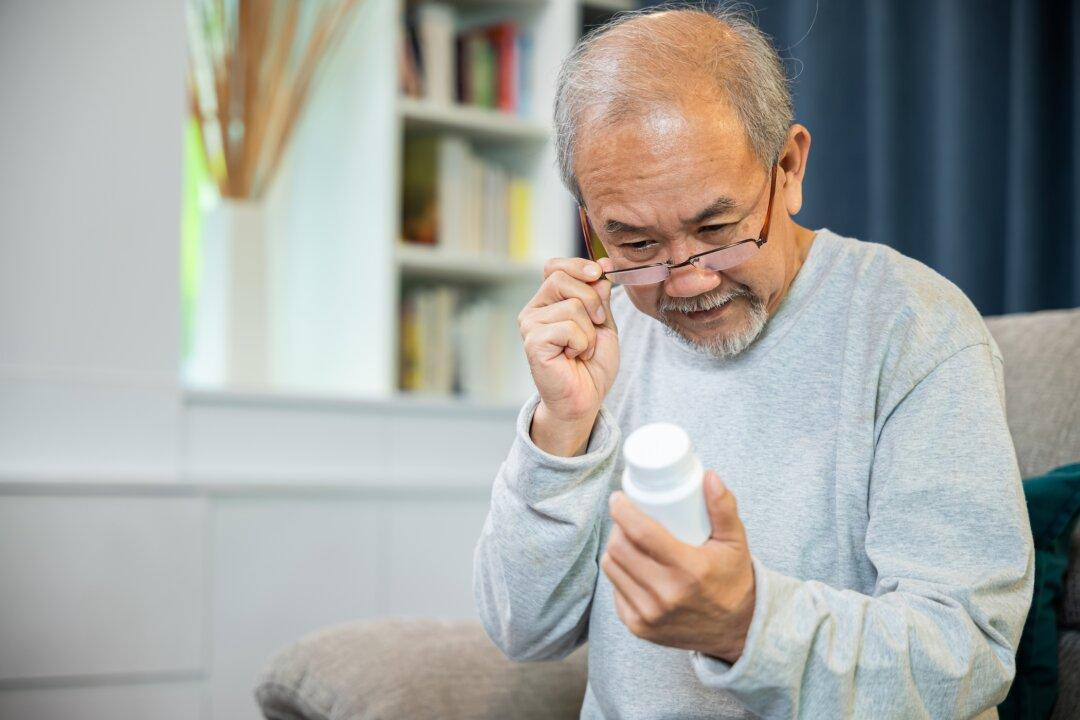Hair loss, although not a life-threatening condition, can be a significant source of social stigma and pose a profound detriment to quality of life. However, it is readily reversible in many cases once the underlying cause is identified and remediated.
In many cases, it can be rectified by optimizing vitamin and mineral status, since vitamins and minerals play a critical role in the hair cycle and in particular in the rapid turnover of the matrix cells residing within the follicle bulb (1). In fact, many of the overt nutritional deficiency diseases are associated with prominent hair loss, showcasing how crucial our diets are not only for prevention of pathology, but also for visible signs of health such as healthy hair.
For example, in the eighteenth century, James Lind documented that scurvy, the vitamin C deficiency disease that historically afflicted sailors on long voyages, was linked to dermatological symptoms including skin hemorrhage and hair loss (1). Other conditions of protein-energy malnutrition including kwashiorkor and marasmus, can also be associated with profound hair loss, underscoring how important diet is to hair quality (1).
1. Eat a Nutrient-Dense Diet Replete in B Vitamins
Human hair, which is comprised of approximately 100,000 hair follicles, grows in three phases, including the active growing or “anagen phase,” which represents 90% of the hairs, the degeneration or “catagen phase,” representing less than 10% of hairs, and the resting or “telogen phase” in which hair is shed, representing 5% to 10% of the hairs (2). During the anagen phase in particular, essential dietary elements including vitamins, minerals, and protein are required.Deficiencies in the water-soluble vitamin B complex are particularly implicated, since B vitamins play a foundational role in cell metabolism. Because folate and vitamin B12, for example, are active in the production of nucleic acids, they may play a role in the highly proliferative hair follicle (1). Although research is inconsistent, some findings are confirmatory of these deficiencies in conditions of hair loss, such as one study which showed that mean red blood cell folate was significantly suppressed in patients with alopecia areata (AA) (Yousefi 3). Folate is present in a variety of foods, with some of the highest food sources including beef liver, spinach, black-eyed peas, asparagus, and Brussels sprouts.
Vitamin B12 sufficiency is also quintessential to hair growth since it affects the synthesis of almost 100 different substrates including RNA, DNA, and proteins (1). In some investigations, as many as half of the individuals eating a vegan diet were categorized as vitamin B12 deficient (Gilsing 4), since B12 is found exclusively in animal products. Foods naturally rich in vitamin B12 include clams, beef liver, trout, and sockeye salmon, and fortified nutritional yeasts also contain B12 (6 Health Prof Fact Sheet B12).
Deficiencies in riboflavin (vitamin B2) may likewise contribute to hair loss. A precursor of flavin cofactors of the electron transport chain known as flavin mononucleotide (FMN; also known as riboflavin-5'-phosphate) and flavin adenine dinucleotide (FAD), riboflavin is instrumental to the series of redox reactions within the inner mitochondrial membrane that serve to generate cellular energy. Riboflavin is important not only for metabolism of macronutrients but it is also important for cell function, growth, and development and is used as an antioxidant for the immune system and for healthy skin and hair (5).
Pregnant and lactating women, vegans, older adults, alcoholics, people with certain disorders such as Brown-Vialetto-Van Laere syndrome (BVVL), and women on oral contraceptive pills are at risk for riboflavin deficiency (5). The best non-fortified sources of riboflavin are organ meats, with beef liver topping the list. Lean meats, clams, mushrooms, almonds, eggs, quinoa, and salmon also contain moderate amounts.
Lastly, biotin (vitamin B7) is one of the most recommended supplements for reversing hair loss, due to its role as a coenzyme for carboxylase enzymes which play a role in metabolic reactions critical to maintenance of healthy hair such as fatty acid synthesis, gluconeogenesis, and branched-chain amino acid catabolism (6). Although skin rashes, brittle nails, and hair loss are all signs of biotin deficiency, researchers state that large-scale studies do not support the efficacy of biotin supplementation (1).
Even so, biotin deficiency warrants exploration in cases of hair loss, especially where risk factors for biotin deficiency, such as alcoholism, pregnancy, malabsorption, and use of medications including valproic acid and isotretinoin, which disrupt activity in the enzyme biotinidase, are present (1). Excessive consumption of raw eggs can also deplete biotin, because avidin in the egg whites attaches to biotin and interferes with its absorption (1). Cooking eggs can circumvent this problem since it destroys the avidin particles.
A foods-first approach is the safest bet, as long as absorptive processes are intact, because foods contain synergistic nutrients to prevent the genesis of imbalances which can occur with supplementation--and especially with the megadose supplementation which is oftentimes recommended. Beef liver again tops the list as the richest source of biotin followed by whole eggs, with pink salmon, pork chops, hamburger patties, sunflower seeds, and sweet potato also containing fair but comparatively lower amounts.
2. Address Thyroid Dysfunction
It has been well-elucidated within the scientific literature that various endocrine disorders, including hypothyroidism, hyperthyroidism, and parathyroid disorders, can contribute to hair loss (7). Disorders of the thyroid gland, the butterfly-shaped gland that sits at the base of the neck, are implicated in hair loss since thyroid hormone is critical to development and maintenance of the hair follicle (7).- free T3 (fT3)
- free T4 (fT4)
- reverse T3
- thyroid peroxidase (TPO) antibodies
- thyroglobulin (TG) antibodies
Gluten is also known to produce leaky gut syndrome, wherein the selective gates between intestinal cells become excessively permeable, allowing for the trafficking of undigested food proteins, microbial byproducts, endotoxins, and foreign agents into systemic circulation (9). This influx of inflammatory components provokes an immune response that can culminate in autoimmune response against the thyroid and other tissues.
3. Check Your Vitamin D Levels
Vitamin D is a fat-soluble vitamin necessary for the balance of the three distinct arms of the immune system: Th1, Th2, and Th17. Generally, polarization to the Th1 or Th17 immune responses away from the Th2 response results in excessive inflammation, tissue damage, and possible autoimmunity (10). In other words, without adequate vitamin D, the scales may be tipped in the direction of an inflammatory cascade that leads to immune dysfunction. Thus, vitamin D’s immunomodulatory effects are undeniably essential for healthy immune responses (11).However, conflicting findings in the research suggest that AA may not always boil down to a vitamin D deficiency itself. In some cases of AA, a decrease in vitamin D receptor expression and a resultant decrease in vitamin D activity might also contribute (12).
4. Include Antioxidant-Rich and Anti-Inflammatory Foods In Your Diet
Antioxidant-rich and anti-inflammatory foods are revered as pillars of health for a myriad of reasons. However, their possible applications as treatments in hair loss may give them a more vanity-driven, yet vital application.Dermal papilla cells (DPCs), cells located at the base of the hair follicle, are responsible for signaling the division of hair follicle cells that leads to hair growth (14). Supporting the integrity and signaling capacity of these cells, then, is of the utmost importance in maintaining hair growth and preventing hair loss.
In cell culture studies, loss of proliferative capacity of DPCs--or the ability of these cells to multiply--is associated with increased markers of oxidative stress, or inflammation (6). Additionally, topical application of lipid peroxides (fats damaged by free radicals) causes cell death of hair follicle cells, leading to the onset of the catagen or shedding phase in the hair cycle. These findings are mirrored by elevated biomarkers of oxidative stress in AA and androgenetic alopecia (AGA), also known as pattern hair loss (15, 16).
What this all means, then, is that inflammation is a potent mediator of hair loss. In addition to the aforementioned Th1 polarization in AA, specific inflammatory molecules are also observed in AGA scalps. In AGA-affected hair follicles, there also seems to be elevated levels of the bacteria strain P. acnes. This particular strain incites the immune system through a release of byproducts called porphyrins (17).
The ensuing response is an activation of IL-1α, a pro-inflammatory cytokine known to inhibit hair growth, and TNF-α, a potent inducer of the inflammatory transcription factor NF-κB which is the gateway to other mediators of inflammation such as prostaglandins, thromboxanes, and leukotrienes. All of this culminates in the production of inflammation-spawning signaling molecules that wreak havoc on hair growth.
By including antioxidant-rich and anti-inflammatory foods as a focus in your diet, you can assist your body in lowering inflammation and mitigating oxidative stress. Try “eating the rainbow” to ensure a diversity of phytonutrients and incorporating fatty fish, turmeric, ginger, and even herbal medicines like cannabinoid-rich full-spectrum hemp oil into your daily routine.
- Artichokes
- Green and red chili peppers
- Lemon skin
- Curly kale
- Okra flour
- Apples
- Plums
- Apricots
5. Rule out Anemia
Iron deficiency is the leading global cause of anemia, responsible for 30%-50% of anemia in children and other groups. It is more common in women, with studies illuminating that two billion people worldwide are iron deficient (19). Iron deficiency anemia occurs when the balance of iron intake, iron stores, and iron losses become disturbed and can no longer support production of the body’s red blood cells, which carry iron-rich proteins known as hemoglobin. Hemoglobin is important as a result of its role in tissue oxygenation, or the delivery of oxygen to tissue.Although low iron is frequently touted as a cause of hair loss, findings vary, but some research does document a relationship between iron deficiency and conditions of hair loss including female pattern hair loss (FPHL), alopecia areata, alopecia universalis or totalis, and telogen effluvium (20). One study found a significant decrease in hair loss and improvement in serum ferritin concentration in subjects with telogen effluvium who received oral iron therapy (21). Another analytical case-control study found that serum ferritin levels below or equal to 30 ng/mL are strongly associated with telogen hair loss in women of childbearing age without systemic inflammation or other underlying disorders (22).
- Serum Iron
- Ferritin
- Total iron binding capacity (TIBC)
- Unsaturated iron binding capacity (UIBC)
- Transferrin saturation percentage
6. Enhance Your Insulin Sensitivity
The metabolic dysfunction known as insulin resistance is a contributor to elevated androgen levels, which is a mediating factor in the pattern hair loss known, again, as androgenetic alopecia (AGA) (17). A loss of cellular sensitivity to insulin forces an elevation in blood insulin levels, also known as hyperinsulinemia. In ovarian cell culture studies, hyperinsulinemia has been shown to increase the expression and enhance the activity of the 5α-reductase enzyme responsible for converting testosterone into powerful androgen dihydrotestosterone (DHT) (23).DHT can stimulate the proliferation of sebaceous gland cells, the microscopic exocrine glands in the skin that secrete an oil, waxy substance known as sebum that lubricates the skin and hair. The result is increased sebum production (17), allowing pro-inflammatory P. acnes bacteria to readily colonize the hair follicle, leading to inflammatory responses, free radical production, and the need for tissue repair.
This tissue repair is initiated by a growth factor called TGF-β1 responsible for creating fibrous scar tissue. Continual stimulation of this process, as in chronic inflammation and oxidative stress, can lead to a process called perifollicular fibrosis. This can cause restricted growth space inside the hair follicle and choked-off blood supply, eventually leading to hair loss.
To prevent this deleterious sequence of events, restoring insulin sensitivity should be the priority. Inhibiting the insulin resistance cascade prevents insulin-associated DHT spikes, which may help reverse and prevent AGA hair loss. The cause of insulin resistance is still elusive, but there is an emerging trend within the literature that suggests inflammation and oxidative stress are inextricably linked to reduced insulin sensitivity (24).
Some natural agents with insulin-sensitizing properties include berberine from goldenseal, bitter melon, cinnamon, and alpha lipoic acid. Curcumin, an active constituent within the golden-hued Indian culinary spice turmeric, is particularly effective, with one study showing that it is 400 to 100,000 times more effective than the prescription drug Metformin at activating the mechanism behind glucose uptake (25).
Other Variables in Hair Loss
As illustrated, hair loss is a multi-factorial condition that requires a multi-pronged approach. In addition to the aforementioned factors, it is important to manage stress, since stressors can disrupt the finely-orchestrated hormonal symphony and change hair follicle biochemistry. Equally significant is minimizing exposure to environmental toxicants.Phthalate-laden, endocrine-disrupting shampoos, conditioners, and styling products as well as chlorinated and fluoridated water not only irritate the hair follicles and can precipitate shedding, but also displace iodine in the thyroid gland and can suppress thyroid function, creating a vicious cycle of hair loss.
References
1. Almohanna, H. et al. (2019). The Role of Vitamins and Minerals in Hair Loss: A Review. Dermatological Therapies, 9(1), 51-70.2. Phillips, T.G. et al. (2017). Hair loss: common causes and treatment. American Family Physician, 96(6), 371-378.
3. Yousefi, M. et al. (2014). Evaluation of serum homocysteine, high-sensitivity CRP, and RBC folate in patients with alopecia areata. Indian Journal of Dermatology, 59(6), 630.
4. Gilsing et al. (2010). Serum concentrations of vitamin B12 and folate in British male omnivores, vegetarians, and vegans: results from a cross-sectional analysis of the EPIC-Oxford cohort study. European Journal of Clinical Nutrition, 64(9), 933-939. doi: 10.1038/ejcn.2010.142
6. Trüeb R. M. (2009). Oxidative stress in ageing of hair. International Journal of Trichology, 1(1), 6-14. doi:10.4103/0974-7753.51923
7. Vincent, M., & Yogiraj, K. (2013). A Descriptive Study of Alopecia Patterns and their Relation to Thyroid Dysfunction. International Journal of Trichology, 5(1), 57-60.
9. Fasano, A. (2012). Leaky gut and autoimmune disease. Clinical Review of Allergy and Immunology, 42(1), 71-78. doi: 10.1007/s12016-011-8291-x.
10. Damsker, J. M., Hansen, A. M., & Caspi, R. R. (2010). Th1 and Th17 cells: adversaries and collaborators. Annals of the New York Academy of Sciences, 1183, 211-221. doi:10.1111/j.1749-6632.2009.05133.x
11. Hewison, M. (2012). An update on vitamin D and human immunity. Clinical Endocrinology,76(3), 315-325. doi:10.1111/j.1365-2265.2011.04261.x
12. Gerkowicz, A. et al. (2017). The Role of Vitamin D in Non-Scarring Alopecia. International Journal of Molecular Sciences, 18(12), 2653. doi:10.3390/ijms18122653
13. Ito, T. et al. (2005). Interferon-gamma is a potent inducer of catagen-like changes in cultured human anagen hair follicles. British Journal of Dermatology, 152(4), 623-631. doi:10.1111/j.1365-2133.2005.06453.x
14. Driskell, R. R., Clavel, C., Rendl, M., & Watt, F. M. (2011). Hair follicle dermal papilla cells at a glance. Journal of Cell Science, 124(Pt 8), 1179-1182. doi:10.1242/jcs.082446
15. Prie, B.E. et al. (2015). Oxidative stress and alopecia areata. Journal of Medicine and Life, 8 Spec Issue(Spec Issue), 43-46.
16. Prie, B.E. et al. (2016). Oxidative stress in androgenetic alopecia. Journal of Medicine and Life, 9(1), 79-83.
17. English, R. (2018). A hypothetical pathogenesis model for androgenic alopecia: clarifying the dihydrotestosterone paradox and rate-limiting recovery factors. Medical Hypotheses, 111, 73-81. doi: 10.1016/j.mehy.2017.12.027
18. Carlsen, M.H. et al. (2010). The total antioxidant content of more than 3100 foods, beverages, spices, herbs and supplements used worldwide. Nutrition Journal, 9(3), doi: 10.1186/1475-2891-9-3
19. Miller, J.L. (2013). Iron Deficiency Anemia: A Common and Curable Disease. Cold Spring Harbor Perspectives in Medicine, 3(7): a011866.
21. Rushton, D.H. et al. (2002). Causes of hair loss and the developments in hair rejuvenation. International Journal of Cosmetic Science, 24, 17-23.
23. Kayampilly, P.P. et al. (2010). Stimulatory effect of insulin on 5alpha-reductase type 1 (SRD5A1) expression through an Akt-dependent pathway in ovarian granulosa cells. Endocrinology, 151(10), 5030-5037. doi:10.1210/en.2010-0444
24. Keane, K.N. et al. (2015). Molecular Events Linking Oxidative Stress and Inflammation to Insulin Resistance and β-Cell Dysfunction. Oxidative Medicine and Cellular Longevity, 2015, 181643. doi:10.1155/2015/181643
26. Gao, H. et al. (2017). Fish oil supplementation and insulin sensitivity: a systematic review and meta-analysis. Lipids in Health and Disease, 16(1), 131. doi:10.1186/s12944-017-0528-0





